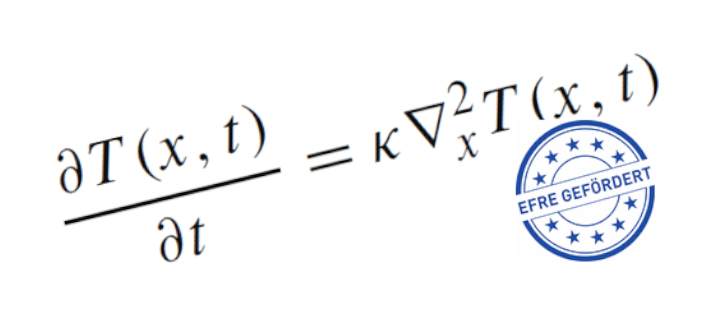Our new brochure ‘FIELAX In-Situ Thermal Testing’ describes how we measure in-situ temperatures and calculate thermal conductivities as well as different fields of application. Simply download it here.
Heat Flow
New publication on the variability of thermal conductivities
As part of the project "WEGNordOst", which is funded by the state of Bremen within the framework of the state program "Promotion of Research, Development and Innovation" (FEI) of the Senator for Economics, Labor and Europe of the Free Hanseatic City of Bremen, we have published some of the results together with our cooperation partners from the University of Bremen and the University of Kiel. The publication is available at: https://link.springer.com/article/10.1007/s11001-023-09531-2 and describes the sediment temperatures and thermal conductivities of coastal sediments in the German part of the Baltic Sea / Eckernförde Bay.
WEGNordOst – Update
As part of the "WEGNordOst" project, which is funded by the state of Bremen under the state program "Promotion of Research, Development and Innovation" (FEI) of the Senator for Economics, Labor and Europe of the Free Hanseatic City of Bremen, we are investigating the interaction between temperature and thermal conductivity in gas-bearing sediments. For this purpose, we conducted measurements in the Eckernförde Bay (Baltic Sea) with the research vessel ALKOR in November 2022 and April 2023. We were able to collect a lot of interesting data, the analysis of which will keep us busy for a while. Read more
Feedback between Temperature and Thermal Conductivity
In general, thermal conductivity is regarded as a material constant. However, as a result of strong heating or strong cooling, changes in the state of the materials can occur which also influence their thermal properties. In particular, gases generally have much lower thermal conductivities than liquids (see e.g. here: https://www.thermal-engineering.org/what-is-thermal-conductivity-of-water-and-steam-definition/). Such processes could lead to changes in the thermal properties of gas-bearing sediments in the offshore area as a result of both natural and anthropogenic influences. Reduced thermal conductivity due to increased gas content in the sediment could thereby prove problematic for the installation of offshore energy cables. This project is funded by the state of Bremen within the framework of the state program "Promotion of Research, Development and Innovation" (FEI) of the Senator for Economics, Labor and Europe of the Free Hanseatic City of Bremen.
Heat conductivity and temperature diffusivity
For many years, the thermal conductivities of sediments have been calculated at FIELAX from the data of special temperature measurements. For many applications, however, the thermal diffusivity is also of interest. Together with the University of Bremen it was investigated how the calculation of thermal diffusivity from temperature data in addition to thermal conductivity can be achieved or improved. As a result of this project, which was supported by the European Regional Development Fund (ERDF), a scientific publication was produced, which is available at https://doi.org/10.1007/s13137-021-00183-1.





